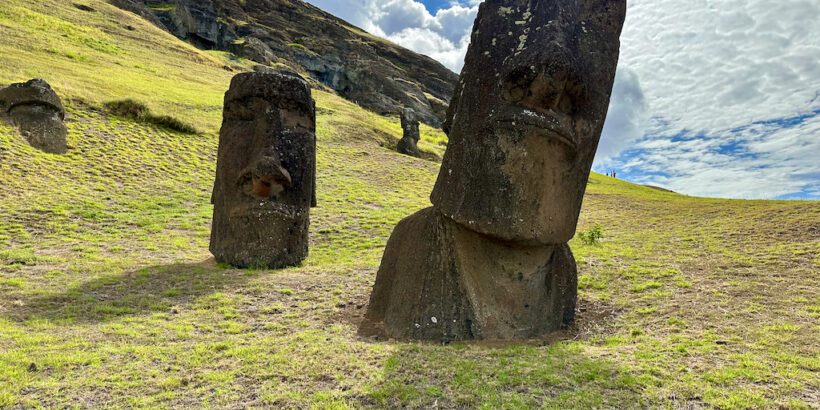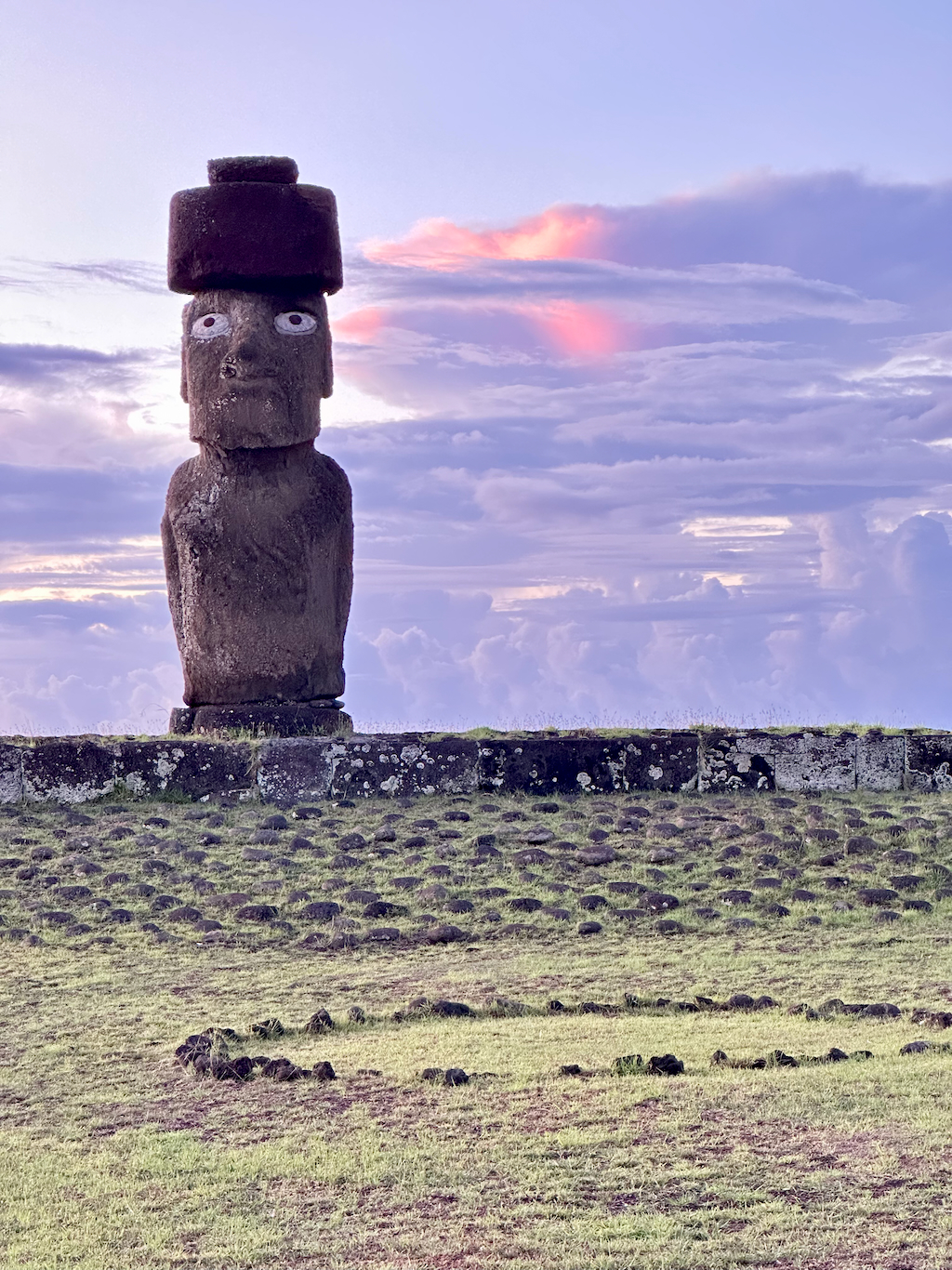You’ve probably seen any number of YouTube thumbnails or header images with a huge Easter Island statue, known as a “moai,” being excavated with a huge and (likely photoshopped) stone body being revealed.
I know I have seen my fair share of these images and this has led to a lot of people asking questions like do the Easter Island heads have bodies?
In this article, I want to clarify the answer to that question but also clarify what I think is a common misconception about our knowledge related to Easter Island.
Do the Easter Island heads have bodies?
Yes, the Easter Island heads have bodies.
However, this question is often accompanied by a narrative suggesting that this knowledge was gained by some type of major (recent) discovery when in fact it would have always been known to anyone familiar with the island or even just someone casually visiting.
Let me explain below.
The weird and nonsensical narrative that started this question
There is this narrative that exists that goes something like this.
Some team of excavators arrive on Easter Island one day (in recent memory) and decide to dig up the ground surrounding a moai statue.
Upon excavating, they discover that the moai statue does not just consist of a head but has an entire “full body” connected to it! Unbelievable!
This was apparently some type of major archaeological revelation that changed our understanding of the moai and Easter Island as a whole.
But this narrative does not make sense when you look at the facts.
Why this revelation never took place
First, consider that these moai were first built over the span of a few hundred years. There is some debate as to when exactly these were created but they were generally thought to be created between 1,100 and 1,650 AD.
(So the statues are likely not thousands of years old as some also believe.)
These statues were designed to represent the ancestors of the inhabitants of Easter Island.
Not just in a way that remembered them but in a way that captured supernatural power that could be used to protect their clans or community. This power was called “mana.”
Indeed, this is probably why the vast majority of the moai don’t face out towards the ocean – they needed to keep a watchful eye on their descendants.
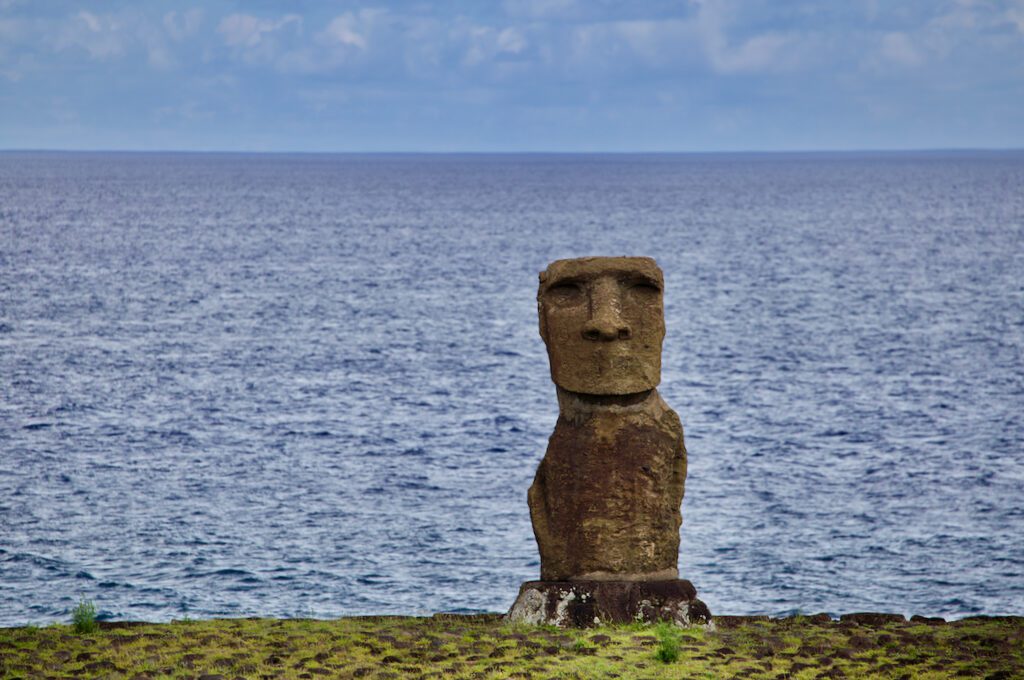
Anyway, when these statues were created they were created with “full bodies.”
Yes, the heads were way oversized but the bodies had arms, hands, and were often decorated with art and tattoos and symbols. There were even these cool hats called pukao that were placed on top of them along with white corals eyes.
I should clarify that when I say “body” I mostly mean a trunk with flat arms and hands. Think body like a bowling pin.
Most of them always seem to have taken on a universal male shape although there were some feminine moai. Also, a few select moai do have feet and even “junk in the trunk” although that was rare to see.
Some of these statues were transported miles away from the quarry that they were carved out from.
Many believe that they were basically “walked” by using a system of ropes and a lot of muscle which is one of the most impressive human feats in all of history if you ask me.
The statues would be transported to platforms called ahu and that is where you could find a row of statues overlooking a local village.
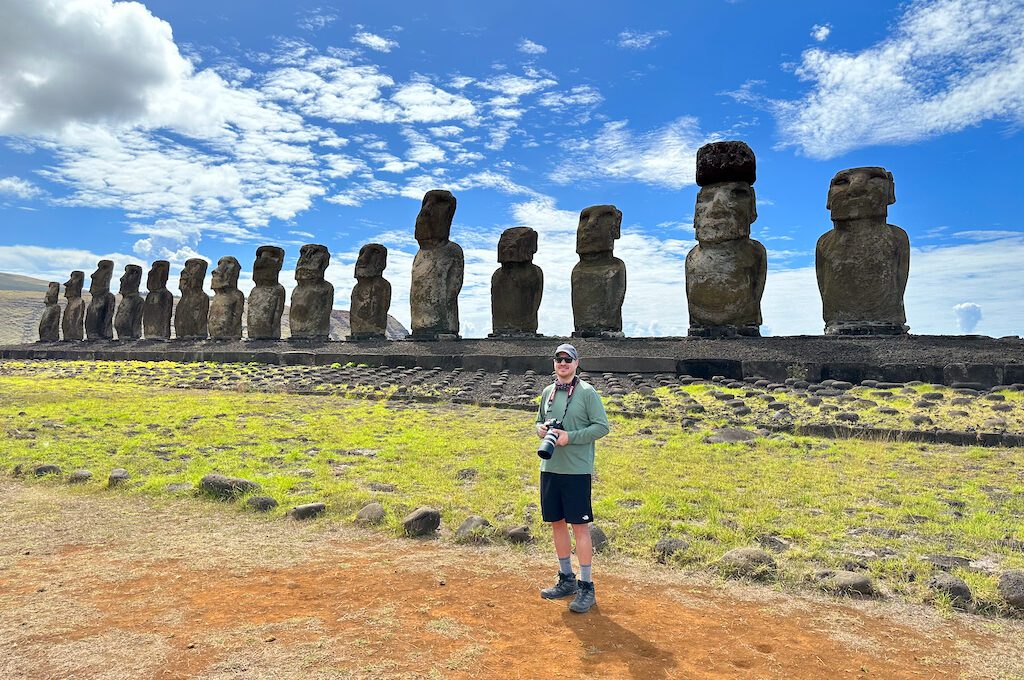
Eventually, the inhabitants sadly seemed to have turned against the statues.
Perhaps it was famine, disease, or something else but it seems that the inhabitants rebelled against these ancestral statues and eventually toppled them over.
Other natural events like earthquakes or tsunamis could’ve also played a role in the toppling of many of these. But I think it’s pretty clear that the reverence for the moai was largely lost at some point and that resulted in many of these coming down.
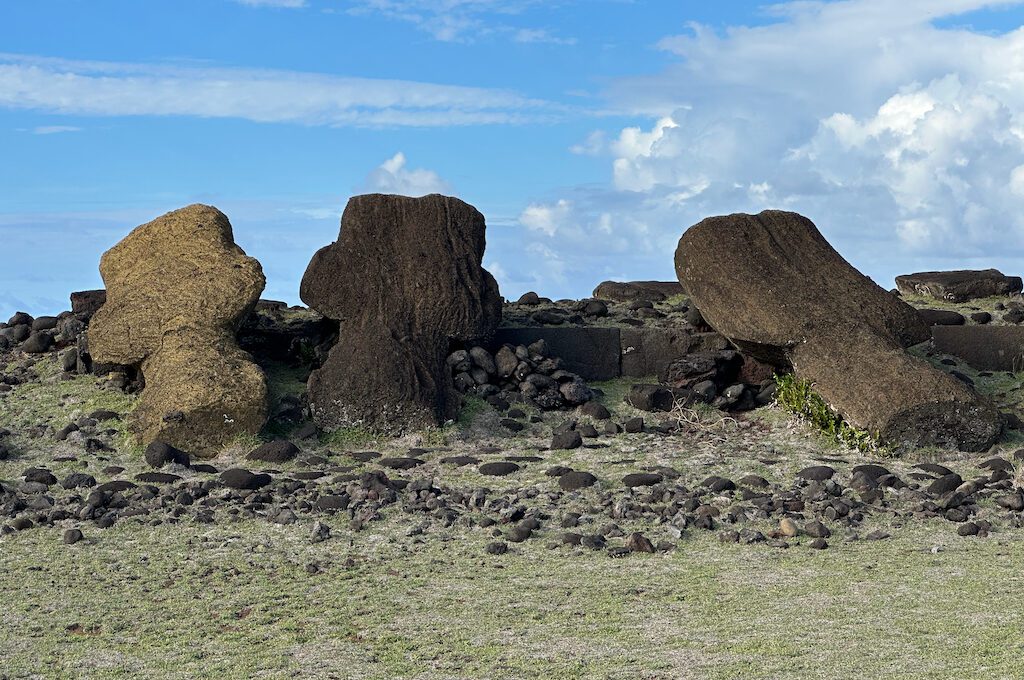
As Europeans started to arrive on the island in the 18th century, they found some statues standing but lots of them toppled over.
At no point during this time would the original inhabitants or European explorers have thought the statues were commonly just heads.
Instead, they would have seen the moai’s entire body like the moai that was taken to the British Museum in 1868 and put on display for everyone to see the body.
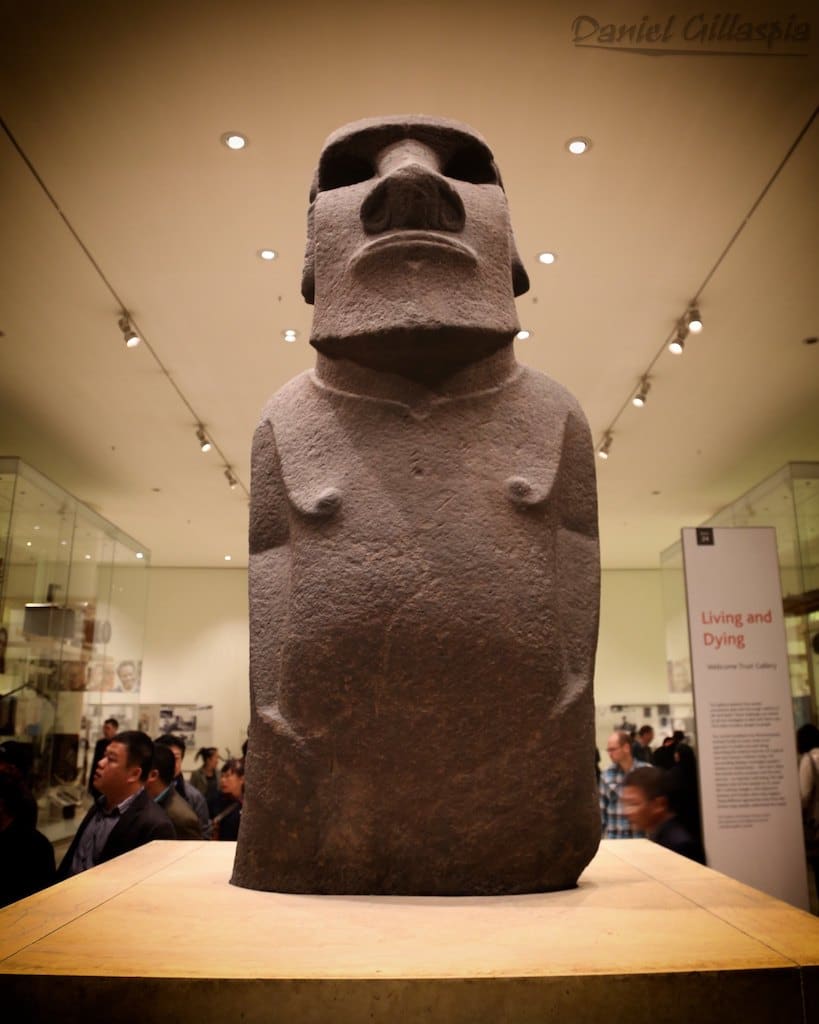
Now, as you get close to the quarry, known as Rano Raraku, where the vast majority of statues were carved you will find a lot of statues covered up to their chest or chin.
If you were blindfolded and then just dropped on Rano Raraku’s slopes in front of one of these, you may not have thought that the statues have a full body.
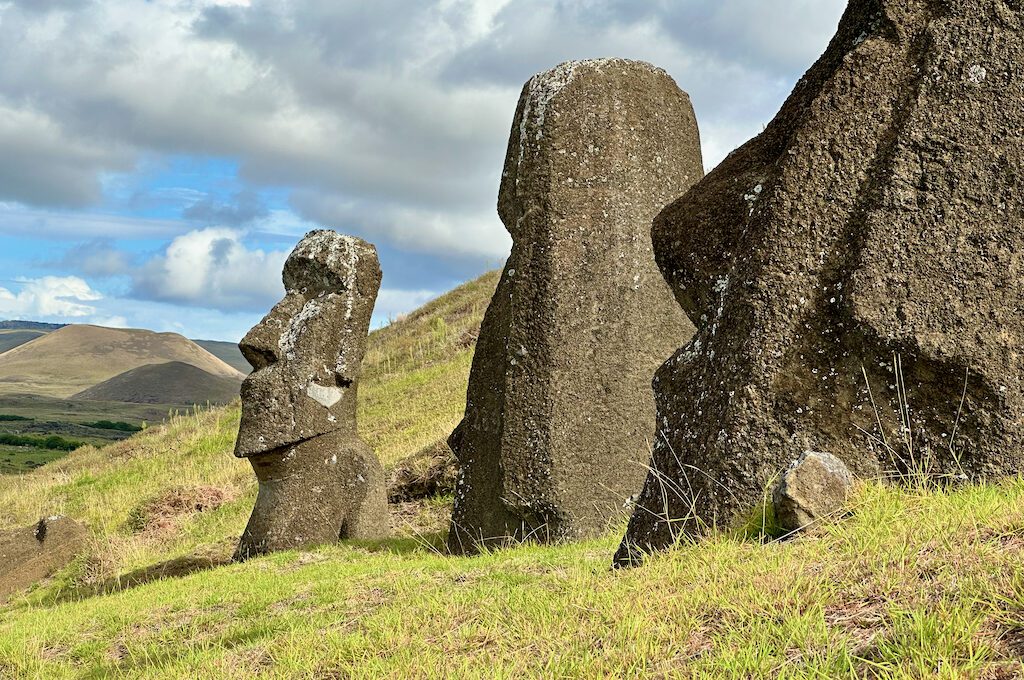
But anyone who arrived on Easter Island within the last 1,000 years would have seen the statues toppled over or standing and would have instantly recognized that the statues typically have full bodies.
In addition, any scientist (or team of explorers) arriving on the island would surely have also known this by the time they saw a buried moai.
There have been many excavations on the island and they have dug up statues that were completely buried or partially submerged.
This, I’m sure, has led to a better understanding of the shapes and designs of the moai and probably the Rapa Nui culture but it doesn’t make sense that any explorer would have been shocked to find a body below one of the Easter Island heads as is commonly portrayed.
That’s because there were dozens and dozens of full body moai that could be found scattered all around the island. Moreover, the quarry where the statues are carved is full of incomplete moai (with bodies) that were essentially frozen in time.
So one would be able to easily deduce that the statues were always created with the intention of them having a full body.
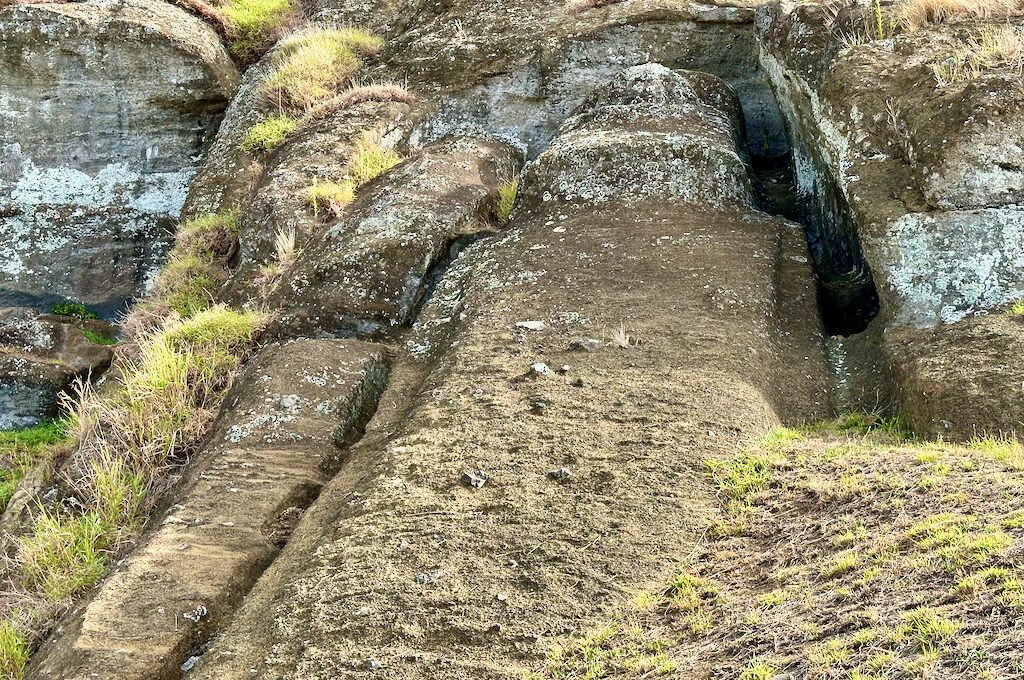
Perhaps the excavated moai bodies could’ve been bigger, wider, or better preserved than originally thought but I don’t see how anyone could have ever seriously questioned whether or not there was a body under the ground or not.
Indeed, the surprise would have been if there was only a head!
Where did this idea come from?
So where did this idea come from that society was all of a sudden shocked by the existence of a full body moai?
That’s a really good question.
My guess is just that images at some point surfaced of the excavations at Easter Island.
Since so few people have actually visited the island or seen the standing moai on ahus (which were not restored until the 1960s and even more recently), all it would take is one publication to post some type of clickbait type of image and headline that made it look like as if some grand discovery had recently been made.
Easter Island heads, like the emoji 🗿, also became a thing in pop culture and so this “revelation” narrative easily found some footing and millions were introduced to it.
So there you have it.
Yes, the statues on Easter Island are more than just heads and have bodies.
And no, there should never have been any serious doubts that the “head statues” had bodies.
That was just some narrative that caught traction and that still has traction today, largely because of its clickbait potential.
Personally, I certainly understand why lots of people would be surprised to find out that there are full body moai (because of the fake narratives out there).
But when I see some platforms trying to promote some type of recent major discovery that never actually happened it’s just annoying and often just contributes to a false understanding about this place’s history.
I think the real story about these moai, which hits on their unbelievable human engineering, mysterious demise, and tireless restoration efforts, is much more fascinating than some fictitious discovery.
If you have interest in visiting the island and learning more about this history, be sure to check out these resources:
- The Best Places to See on Easter Island
- Guide for getting through Santiago de Chile Airport (SCL) to Rapa Nui/Easter Island
- Complete Guide to Exploring Easter Island’s Rapa Nui National Park
- How to get to Easter Island: Everything You Need to Know
- 21 Things You Need to Know About Easter Island Before Visiting
Daniel Gillaspia is the Founder of UponArriving.com and the credit card app, WalletFlo. He is a former attorney turned travel expert covering destinations along with TSA, airline, and hotel policies. Since 2014, his content has been featured in publications such as National Geographic, Smithsonian Magazine, and CNBC. Read my bio.

